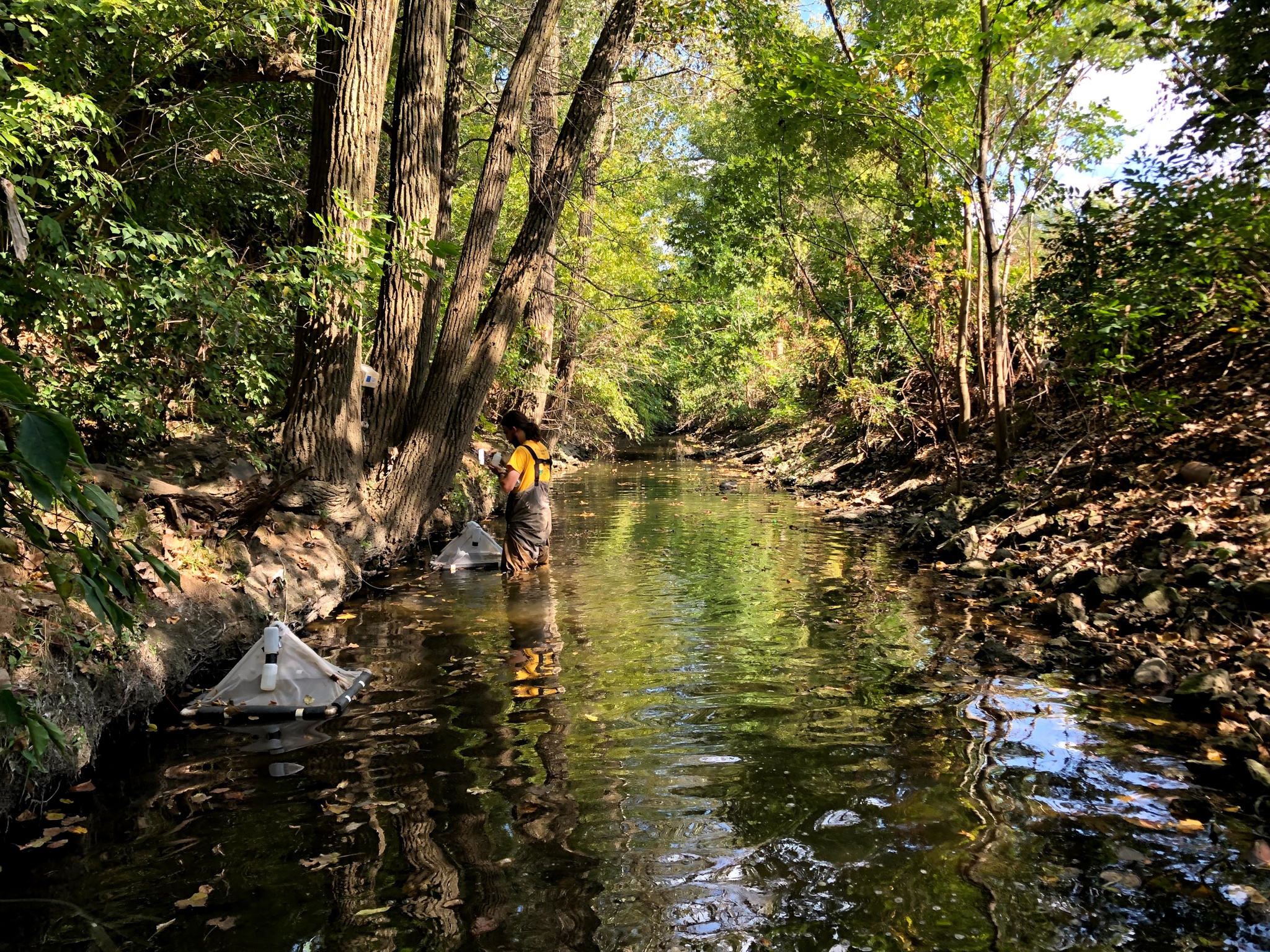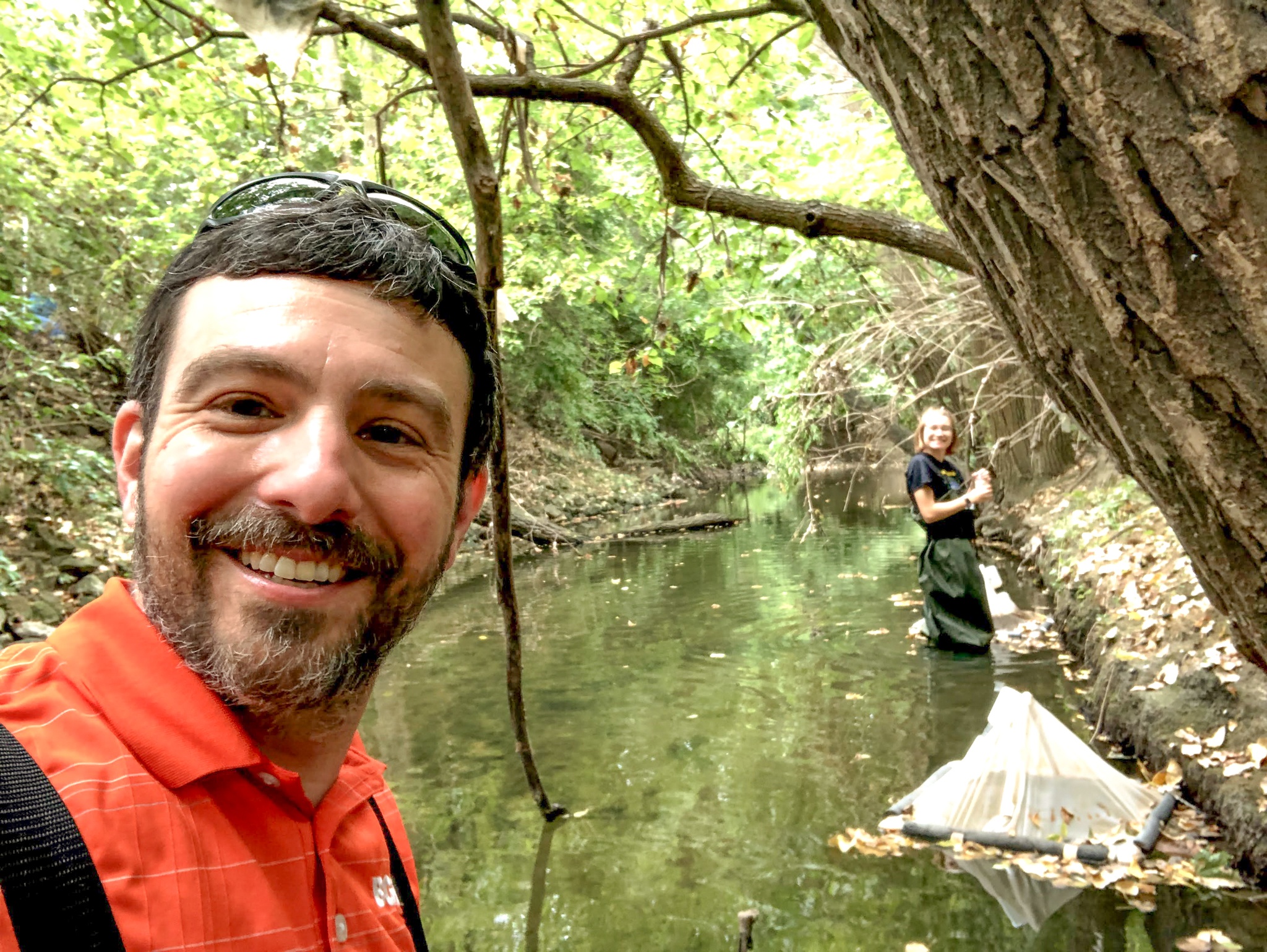
BGSU researchers uncover public health benefits while monitoring contaminant levels in local waterways
Estimated Reading Time:
Wastewater monitoring could help identify the kinds of medications and illicit drugs prevalent in various communities
By Laren Kowalczyk ‘07
A Bowling Green State University biology professor studying how over-the-counter medications, prescribed and illicit drugs and other contaminants in northwestern Ohio waterways affect the food web uncovered an additional public health benefit of the research.
Dr. Kevin McCluney, an associate professor of biological sciences at BGSU and interim director of the BGSU Center for Great Lakes and Watershed Studies, initially sought to determine how contaminants in local waterways directly impact aquatic organisms and subsequently affect the animals eating those organisms.
In doing so, McCluney and a team of researchers found another valuable use for the data.
Similar to wastewater monitoring that can alert communities to a spike in COVID-19, McCluney said waterways can be tested at various intervals for illicit drugs and pharmaceuticals—opening a window into the substances prevalent in various communities.
“Wastewater monitoring is one approach we can use to understand these issues better,” McCluney said. “This intersection of forensic science and ecology can benefit public health in many ways.”
McCluney said the data could help officials forecast and plan for potential overdoses and identify emerging drugs and contaminants. The monitoring would allow them to educate the public on the dangers of specific substances based on their prevalence in a community’s waterways or increase the availability of Narcan, which is used to reverse an opioid overdose.
The data also could inform the need for additional mental health services and support.
McCluney’s team of researchers included Dr. Travis Worst, associate teaching professor and director of the BGSU Center for the Future of Forensic Science; Dr. Chris Ward, assistant biology professor; and Louise Stevenson, a former assistant biology professor at BGSU who is now a researcher and toxicology lab principal investigator at Oak Ridge National Laboratory.
Several BGSU undergraduate and graduate students assisted with the research, providing them with valuable experiential learning opportunities, a priority at the University.
“The students participating in this impactful project were able to see that science is not always a linear process,” Ward said. “Having an open mind and approaching a problem from multiple angles can lead to really cool and unexpected findings. It’s also an example of how ecology research, which is often thought to be esoteric, can lead to applied outcomes that are beneficial to society. It was a great learning experience for us as professors and for the students.”
The initial study
The $120,000 Ohio Sea Grant study began in 2020 and included measurements of contaminants in waterways that intersect with nine northwestern Ohio cities. Researchers have chosen not to identify the cities publicly due to requests by the treatment plants and to avoid the potential for stigmatizing particular communities.
Ohio Sea Grant works to solve the Lake Erie region’s most important environmental and economic issues through research, education, outreach and partnerships with academia, government agencies and the private sector.
Samples were collected before and after water flowed through wastewater treatment plants to compare concentrations of chemicals at each location and evaluate their effectiveness at removing contaminants. Researchers then monitored how those concentrations varied over time, noting increases during certain days of the week or times of day.
Across all nine cities, caffeine was the most prevalent chemical found in the water. There also were elevated concentrations of a metabolite of cocaine and fentanyl, meth, Benadryl and Zoloft, a prescribed antidepressant.
In three of the nine cities, water samples were collected within streams that receive the treated effluent water from a wastewater treatment plant. Samples were collected upstream, near downstream and farther downstream from where wastewater entered the stream, allowing McCluney’s team to understand aquatic food web exposure to contaminants.

Analyzing results
McCluney said concentrations of antidepressant medications remained relatively unchanged in the treated water, which supports existing research that their resistance to breaking down increases their presence throughout the food web.
“The insecticide DDT is a classic example of a contaminant that gets more concentrated as you go higher up in the food chain,” he said. “The research that’s been done so far shows the same thing for antidepressants. We expect them to be pretty highly concentrated in the organisms living in the streams.
“If we think about how to minimize the impact of these contaminants on streams and our food webs, improving wastewater technology is one way to do that.”
McCluney said he and his team are continuing to analyze the effects of the contaminants on various organisms. Caffeine has shown some potential benefits to microbes, serving as a necessary source of nitrogen.
Conversely, it can hinder the effectiveness of an enzyme in photosynthesis and change the nutrient concentration of biofilms, the layer of microbial growth on rocks and sediment. Biofilms are at the bottom of the food web and changes to them could affect the animals that rely on them as a food source.
There is little existing research on the effects of illicit drugs on the food web.
“Most of the work that has been done previously is focused on a classical ecotoxicological approach that involves putting an organism in a beaker of water with a known concentration of the chemical and recording what happens rather than looking at its effect on the entire food web,” McCluney said, noting that the team is seeking additional funding to continue their research.
They are also collaborating with other researchers to obtain funding to support efforts to monitor illicit drugs in wastewater.
“There’s more work to be done,” McCluney said.
Related Stories
Media Contact | Michael Bratton | mbratto@bgsu.edu | 419-372-6349
Updated: 08/01/2025 05:43PM




